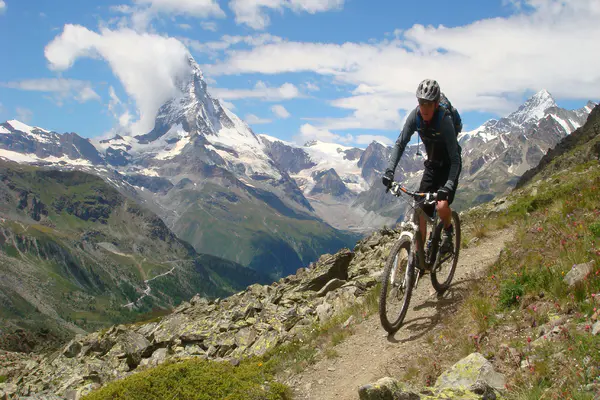Mountain biking is a thrilling and challenging sport. It requires the right gear to ensure safety, performance, and enjoyment. One essential piece of equipment for serious mountain bikers is the clipless mountain biking shoe. In this article, we will explore what clipless mountain biking shoes are, their features, benefits, and how to choose the right pair for your needs.
Clipless mountain biking shoes are specialized footwear designed to connect directly to the pedals of a bike. Unlike traditional flat pedals and shoes, clipless systems offer a more secure and efficient connection. The term “clipless” can be misleading as the shoes actually clip into the pedals using a cleat mechanism. This system improves pedaling efficiency and control.
History and Evolution of Clipless Shoes
The concept of clipless pedals originated in road cycling. The goal was to create a more efficient pedaling system. Early designs were bulky and cumbersome. Over time, advancements in materials and technology led to the development of sleek, lightweight clipless systems. Mountain biking adopted this technology, leading to the creation of clipless mountain biking shoes and pedals specifically designed for off-road conditions.
How Clipless Pedals Work
Clipless pedals use a cleat mechanism to attach the shoe to the pedal. The cleat is a small, metal or plastic piece mounted on the sole of the shoe. It engages with the pedal, allowing the rider to “clip in” and “clip out.” This system offers several advantages:
- Secure Connection: Ensures the shoe stays attached to the pedal, providing better power transfer.
- Efficient Pedaling: Allows for both push and pull motions, maximizing energy use.
- Improved Control: Enhances bike handling, especially on rough terrain.
Types of Clipless Pedals and Cleats
There are various types of clipless pedals and cleats. The two main categories are:
- Two-Bolt System: Common in mountain biking, features a two-bolt cleat. Known for easy engagement and disengagement.
- Three-Bolt System: More common in road cycling, features a larger cleat with three bolts. Offers a larger contact area for power transfer.
See Also: How to Gain Confidence Mountain Biking
Features of Clipless Mountain Biking Shoes
Clipless mountain biking shoes have unique features to enhance performance and comfort:
- Stiff Soles: Provide efficient power transfer.
- Durable Uppers: Made from robust materials to withstand rough conditions.
- Cleat Compatibility: Designed to work with specific cleat systems.
- Tread Design: Offers grip for walking on rough terrain.
- Adjustable Fit: Includes laces, Velcro straps, or ratchet systems for a secure fit.
Benefits of Using Clipless Shoes
Using clipless shoes for mountain biking offers numerous benefits:
- Increased Efficiency: Better power transfer from foot to pedal.
- Enhanced Control: Improved handling and stability.
- Reduced Fatigue: Efficient pedaling reduces muscle strain.
- Better Foot Placement: Consistent positioning on the pedals.
Choosing the Right Clipless Shoes
Selecting the right clipless mountain biking shoes involves several considerations:
- Fit and Comfort: Ensure a snug but comfortable fit.
- Pedal Compatibility: Match shoes with the appropriate cleat system.
- Terrain and Riding Style: Consider shoes designed for the specific type of terrain.
- Weather Conditions: Choose shoes suited for the weather you’ll encounter.
How to Set Up Clipless Shoes and Pedals
Setting up clipless shoes and pedals involves:
- Cleat Installation: Attach cleats to the shoes following manufacturer instructions.
- Pedal Installation: Install pedals on the bike using the appropriate tools.
- Adjustment: Fine-tune the cleat position and pedal tension for optimal performance.
Learning to Use Clipless Shoes
Transitioning to clipless shoes requires practice:
- Start on Flat Terrain: Practice clipping in and out on flat, safe ground.
- Gradual Introduction: Use clipless shoes on easy trails before tackling challenging terrain.
- Emergency Release: Learn how to quickly disengage in case of a fall.
Common Issues and Solutions
Riders may encounter issues with clipless systems:
- Cleat Wear: Replace worn cleats to maintain performance.
- Pedal Tension: Adjust tension to ensure easy engagement and release.
- Hot Spots: Address pressure points by adjusting shoe fit or using insoles.
Maintenance and Care
Proper maintenance extends the life of your clipless shoes and pedals:
- Regular Cleaning: Remove dirt and debris after rides.
- Cleat Inspection: Check cleats for wear and replace as needed.
- Lubrication: Keep pedal mechanisms lubricated for smooth operation.
Advanced Techniques and Tips
Experienced riders can benefit from advanced techniques:
- Efficient Pedaling: Focus on a smooth, circular pedal stroke.
- Dynamic Positioning: Shift body weight to maintain balance and control.
- Foot Positioning: Adjust foot angle and cleat position for optimal comfort and efficiency.
Comparing Clipless and Flat Pedals
Clipless and flat pedals each have their pros and cons:
Clipless Pedals:
-
- Pros: Better power transfer, improved control, reduced fatigue.
- Cons: Learning curve, potential for falls if not disengaged quickly.
Flat Pedals:
-
- Pros: Easier to use, no special shoes required.
- Cons: Less efficient power transfer, reduced control on rough terrain.
Popular Brands and Models
Several brands offer high-quality clipless mountain biking shoes:
- Shimano: Known for durable, reliable shoes.
- Giro: Offers a range of styles for different riding conditions.
- Five Ten: Famous for their grip and comfort.
- Specialized: Provides innovative designs with advanced features.
Conclusion
Clipless mountain biking shoes are a valuable investment for serious riders. They offer enhanced efficiency, control, and comfort. Understanding the features, benefits, and proper use of clipless shoes can greatly improve your mountain biking experience. With the right pair of shoes, you’ll be ready to tackle any trail with confidence and skill.

